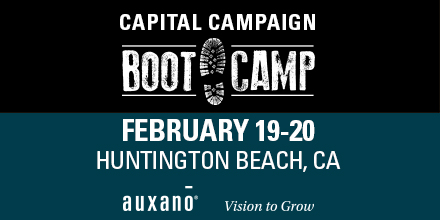
6 Tips in Leading Your Next Capital Campaign
I was given a campaign manual on my first day as an XP. That’s right, I got my first assignment and it was to lead our growing church plant through a capital campaign that would allow us to double our space. Over the next six years, I found myself in back-to-back campaigns as our church attendance grew from 500 to over 2,000 people in weekend attendance. I learned some valuable lessons and some best practices during those six years that I want to pass on to you.
> Slow Down in Order to Speed Up
When it comes to campaigns everyone is in a hurry. Proper prep takes time especially when it’s linked to expanding your space. Most of us pastor types (human types) want everything right now. Determining the scope of a project, the consultant, the lender, the architect, the site issues, along with a dozen more issues are critical to address if your campaign is going to be successful. The more focused you are as you begin, the greater the impact and results. Often the best way to speed up the entire process is to slow down.
> Hire the Right Consultant
I’m not sure what would have happened if we had not hired the right consultant from day one. Failing to engage a consultant may actually cost you tens of thousands of dollars in the long haul. Yes, there are fees involved when you hire a good consultant, A good consultant can be costly, but I promise you it’s the best money you can spend if you want to maximize your campaign. You will find these characteristics in a top-notch consultant:
• Calling – Do they have a passion for helping the local church?
• Competent – Do they have a proven track record as a campaign consultant and do they have local church experience?
• Character – Do they do what they say they’ll do? What do are other people say about who they are?
• Chemistry – Do they understand and fit your culture?
> Let the Senior Leader Call the Shots
First, the Senior Pastor must have buy-in and be engaged. Clearly, every senior leader leads differently. I’ve been in situations where the senior leader wanted to micro-manage every detail. I’ve been in other situations where he wanted to be told “when” and “where.” As an XP it should always be your goal to help the senior leader succeed. So lean into his or her leadership style to accomplish this. My starting point as an XP was, “What is it that I must have from the senior leader for this to succeed?” I made sure he was freed up to actually do that. My job began with his job.
> Link Your Campaign to Vision
Campaigns tend to be too focused on money. The place we need to begin is vision. A good campaign will always start and end with vision. Vision clarity is a must. People give to vision, not to buildings unless it’s part of a larger vision.
> Listen to Your Consultant
Don’t assume you know more about the campaign than your consultant. I have found that there are times when leadership resists listening to their consultant. This happens when the church has had a previous win or big success. Unfortunately, a previous win doesn’t mean the next one will go just as well. It often doesn’t.
> Work Really Hard
Campaigns are hard work. Effective campaigns are even harder. The harder you work, the greater the results. Don’t take shortcuts during this season. Plan on working long, hard days. It will pay off.
I hope these tips will guide you to run a successful campaign that will help you advance your mission and make disciples.
If you enjoyed this article, you need to check out Auxano’s Capital Campaign Boot Camp, coming to Huntington Beach, CA on February 19-20. Click here for full details!























